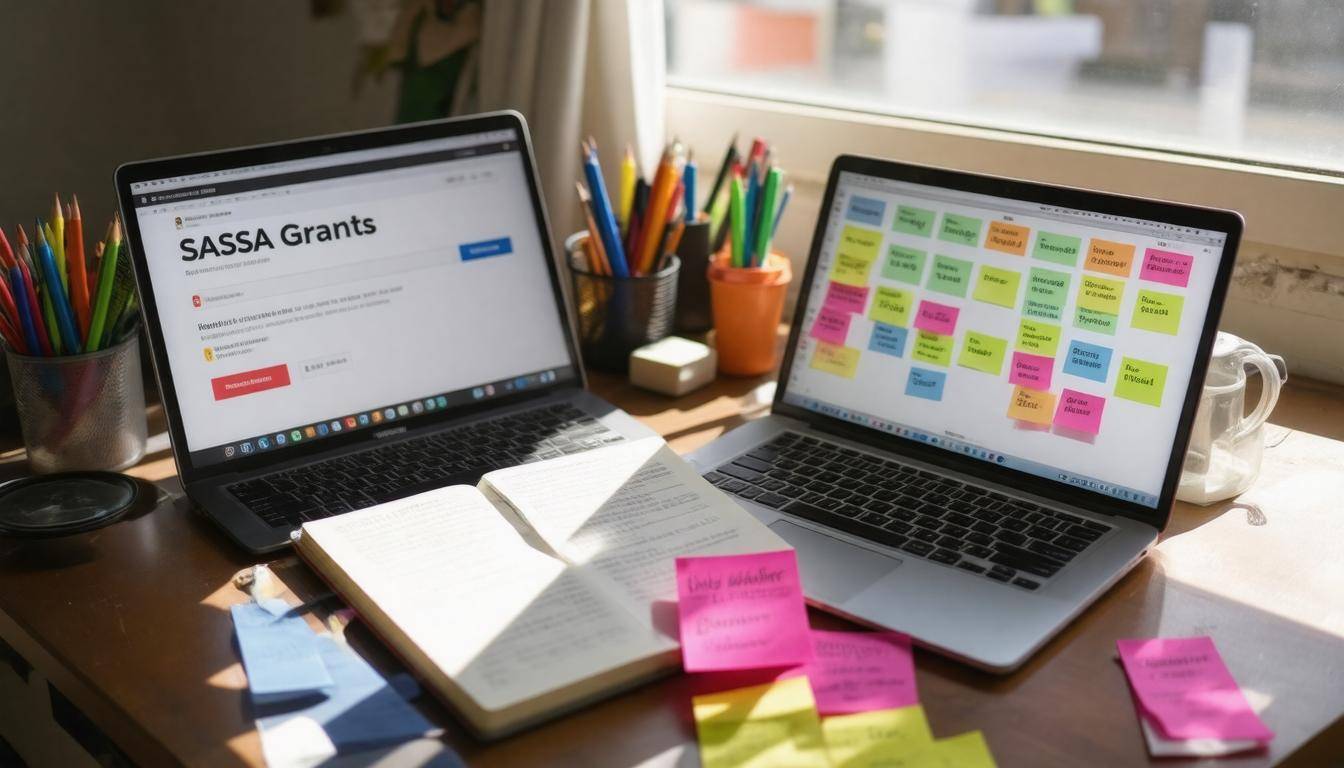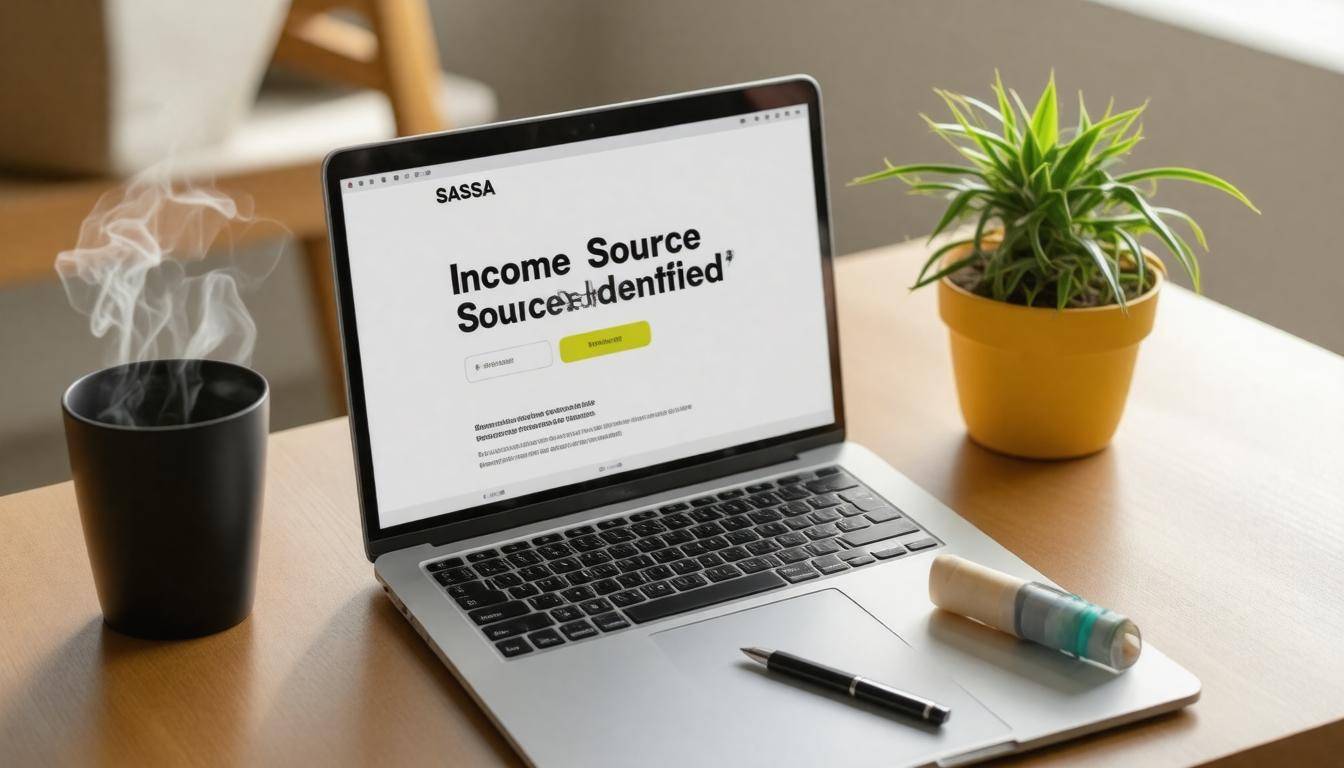If you’ve recently applied for the SASSA R370 grant and noticed that your application is still pending, you’re not alone. Many applicants find themselves in this same frustrating situation, asking the same questions and seeking clarity on why delays might occur.
Understanding these potential hurdles is essential to finding a resolution, whether it’s missing documents, verification issues, or simply a high volume of applications. Let’s break down the reasons behind your pending status so you can take informed steps toward getting the support you need.
Your SASSA R370 grant application may still be pending due to several factors, including incomplete documentation, verification of personal details, or the high volume of applications being processed. It is advisable to check back periodically for updates on your application status through the official SASSA website or customer service hotline to ensure you receive accurate information regarding your case.

Immediate Steps to Resolve Pending Status
The first thing you should do is check your application status online. By visiting the official SASSA website and logging into your account, you can easily navigate to the application status section. Here, updates or specific instructions may be waiting for you. Sometimes, the resolution can be as simple as acknowledging an update that had previously gone unnoticed.
However, if you find that the online status isn’t meeting your needs and lacks any clarity, it’s prudent to contact SASSA customer service directly.
When reaching out, make sure to call or email SASSA’s customer service team with your ID number and application reference number handy. This information will expedite your inquiry and allow representatives to swiftly investigate your case. Don’t hesitate to ask pointed questions about what might be causing the hold-up. Your willingness to engage can often lead to quicker resolutions.
Additionally, sometimes delays stem from missing documentation in your application, which means that verifying everything you’ve submitted is crucial.
Take a moment to double-check that all required documents have been submitted correctly. This includes proof of identity, residency, and financial information. If you notice any gaps or missing files, upload them through the SASSA portal without delay. It can make a world of difference in moving your application along.
To avoid overlooking any steps in this process, you might find it useful to cross-check your documentation against the requirements listed on the official SASSA site.
You should follow these immediate steps:
- Check application status online.
- Contact SASSA customer service.
- Verify and upload required documents.
By demonstrating proactive engagement in these ways, you not only set yourself up for potential success but also empower yourself with knowledge about how SASSA handles applications. Understanding these small steps can greatly alleviate stress while awaiting necessary support during challenging times.
With these foundational steps established, let’s explore some typical factors affecting application processing times that might help clarify your situation further.
Common Reasons for Pending Applications
The status of your SASSA R370 grant application often reflects complexities in the administrative process. One primary reason why applications remain pending is incomplete information. Many applicants unknowingly submit forms lacking essential details or containing errors, which can derail the process. A single missed checkbox or a slight typo could be the difference between swift approval and indefinite waiting.
To avoid this pitfall, be meticulous in checking each field for accuracy and completeness before submitting your application. This simple step can save both you and SASSA considerable time and effort.
It’s important to remember that thoroughness matters—double-checking your information can prevent many delays.
Another significant reason for pending statuses is the reliance on third-party verification. SASSA frequently collaborates with external agencies to validate identity and income details of applicants, which is crucial for maintaining the integrity of financial aid systems. However, delays in these third-party checks can lead to your application being stalled indefinitely.
Recent reports indicate over 40% of applicants experience such delays, often due to factors beyond their control, such as bureaucratic slowdowns or missing data from external sources.
This illustrates an important point: while you can prepare all necessary documentation, external factors still play a vital role in determining the pace of your application’s progress.
Yet another cause for a pending status stems from the review process itself. After initial submissions, applications are subjected to rigorous scrutiny to ensure all criteria are met, including financial need assessments and compliance with regulations. These evaluations may take longer during peak times when many individuals seek assistance simultaneously.
While it might seem disheartening if your application remains pending when others have already received approvals, it’s essential to set reasonable expectations. Awareness of these common issues allows for patience in understanding that other applicants may also face similar hurdles.
Recognizing these barriers helps alleviate some stress associated with the wait and builds a sense of readiness for addressing any incomplete applications that may arise throughout this process.
Addressing Incomplete Applications
An incomplete application can often feel like a frustrating roadblock on the journey to receiving financial aid. As someone who has navigated the maze of applications before, I understand how crucial it is to ensure that every detail is accounted for. It’s like preparing for a big exam; missing just one piece of information can derail everything, resulting in significant delays or even outright rejections.
The first step in addressing an incomplete application is to log in to your SASSA account. This may seem straightforward, but it’s the gateway to understanding where your application stands. Once logged in, you can directly access your application and see any alerts regarding missing fields or documents.
Take a moment to carefully review the entire application form. Each section matters; even small details that might seem innocuous can be pivotal. For instance, did you remember to include your bank details? These are essential for the processing of your funds, and missing them will halt your application immediately.
When reviewing your document submission, consider things like proof of residence or identity. Not only are they needed for validation purposes, but they also demonstrate that you are taking the application process seriously.
If you find any incomplete fields or missing documents during this review, your next course of action involves gathering what you need. This task could be as simple as printing a recent bank statement or as complex as obtaining official identification from your local office. Just remember that detailed documentation not only establishes credibility but also drastically reduces the chances of further delays.
Once you’ve collected all necessary documents, it’s time to upload them and resubmit the application. This is akin to hitting the “submit” button after multiple revisions on an important project at work; it’s nerve-wracking yet essential. Before you click submit again, do one last thorough review. Check that every required document is uploaded and that all fields on the application form are filled out correctly.
Completing these steps provides you with greater confidence that your application will finally move forward without further hindrance. Furthermore, remember to keep records of everything—screenshots of submissions and confirmations are invaluable should any issues arise later on.
Taking these proactive measures will not only help you address incomplete applications effectively but also prepare you for navigating potential verification challenges ahead.
Dealing with Verification Issues
Verification issues are a significant hurdle many applicants face when their SASSA R370 grant status remains pending. It’s essential to recognize how these problems stem from a few key areas.
For instance, identity verification stands at the forefront; if SASSA is unable to confirm your identity with the documents you’ve provided, your application stalls right there. This might happen due to discrepancies between the name you use in your application and what appears on your identification or any missing details that should match official records.
On the other hand, income verification can also complicate matters. If SASSA finds inconsistencies in the income information you’ve submitted, it prolongs the entire process. Missing payslips, unclear references, or even mathematical mistakes can lead to an extensive verification process that not only delays approval but also increases anxiety regarding financial support.
Fortunately, there are straightforward steps you can take to resolve these verification challenges effectively.
Steps to Resolve Verification Issues
The first step is to contact SASSA directly. Understanding precisely which aspect of your application is causing delays gives you clarity and direction. This initial communication is crucial as it sets the tone for resolving any outstanding issues accurately.
Next, it’s advisable to provide any additional verification documents if requested. Being proactive means gathering necessary documents like proof of identity or updated income statements swiftly. Quick action shows SASSA that you are committed and organized, putting you in a better position than those who might delay responding.
Finally, I cannot stress enough how important it is to follow up regularly after submitting new documents. A simple phone call or online inquiry can keep you informed about your application’s status while ensuring that all paperwork has been received and is undergoing processing. Furthermore, consistent communication helps build rapport with SASSA staff and underscores your commitment to resolving the matter.
Grasping these verification challenges and knowing how to address them can significantly affect the pace of getting updates or approvals for your grant application. This understanding becomes increasingly vital as we explore other factors influencing delays within the system.
Understanding Systemic Delays
Systemic delays, though frustrating, come from various interconnected factors that affect how quickly grants are processed. Imagine a massive influx of applications, like a traffic jam during rush hour where too many cars try to fit into a limited space. As of 2025, beneficiaries have reported waiting up to six weeks for their applications to be processed, largely due to these strains on the system.
Factors Contributing to Systemic Delays
One major contributing factor is the high volume of applications. Since the onset of economic hardships exacerbated by the COVID-19 pandemic, many individuals have found themselves unemployed or underemployed, leading to an overwhelming surge in applications that SASSA (South African Social Security Agency) has struggled to keep up with. This spike places immense pressure on the already stretched administrative resources, causing what would typically be a streamlined process to experience considerable bottlenecks.
While SASSA works tirelessly to meet demand, limited staffing and resources mean many applications pile up in queues, further lengthening processing times.
Another layer to this issue appears in the form of administrative backlogs. Even prior to the recent high application volumes, SASSA was already facing challenges due to internal inefficiencies and outdated systems. These existing delays are compounded by new applications—think about trying to finish a puzzle when new pieces are constantly added; it’s tricky! This complicated web makes it difficult not only for first-time applicants but also for those who might need follow-up assistance or status updates on their existing requests.
Each delay serves as an opportunity for improvement within SASSA’s framework. The agency acknowledges these hurdles and aims to enhance its processing capabilities moving forward. Beneficiaries can take proactive steps, such as regularly checking the official status of their applications through SASSA’s online portal or using SASSA’s helpline for updates.
Understanding these systemic issues better equips you to navigate your grant journey effectively while anticipating possible outcomes out of your control. Let’s now examine ways you can stay updated and informed about your application progress.
Tips for Staying Informed

One of the best strategies during this waiting period is to frequently check the official SASSA website. It’s your most reliable source for updates regarding application statuses and policy changes. Since communication is key, even setting a calendar reminder to visit the site once a week can be beneficial. By doing so, you ensure that you won’t miss any important announcements or deadlines related to your grant.
Furthermore, signing up for notifications can keep you in the loop effortlessly, allowing you to receive timely alerts directly to your email or phone. It’s almost like having a personal assistant reminding you of any updates on your application.
Useful Resources
| Resource | Description |
|---|---|
| SASSA Website | Official updates on application status |
| Community Forums | Peer support and sharing of tips |
| Social Media Channels | Quick updates and engagement with SASSA officials |
| Customer Service Hotline | Direct inquiries about your application status |
In addition to checking the SASSA website, consider exploring community forums. These platforms serve as informal yet invaluable spaces where fellow applicants share experiences and insights. Engaging in these discussions can provide emotional support and practical tips. Others may have faced similar issues and found solutions that could expedite your own processing time.
Social media channels are another great avenue for staying informed. By following SASSA’s official accounts on platforms like Twitter or Facebook, you’ll gain access to real-time updates while also allowing interaction. This format enables open communication with officials who might provide clarity on issues that matter to you.
Don’t hesitate to utilize the customer service hotline for direct inquiries about your application status. Speaking with a representative can help clarify doubts that may arise as you navigate through the waiting process.
Keeping these actionable tips in mind will not only help maintain your calm but also empower you during this uncertain phase. Transitioning now, we shift our focus to exploring available tools and services that can aid you further in this journey.
Resources for Further Assistance

Sometimes you may find yourself needing a bit more help to navigate the complexities surrounding your SASSA R370 Grant application. That’s where community forums become incredibly useful. These online spaces provide a platform for individuals to share their experiences, advice, and tips on how they successfully handled similar situations. Engaging in these discussions not only empowers you with insights but also helps you feel less isolated.
For instance, some users have reported resolving their pending statuses by implementing strategies that fellow applicants have shared, ranging from specific documentation tips to understanding the processing timelines better.
Community Forums
Online forums and social media groups serve as vital sources of peer support where you can interact with others who are in the same boat. Such platforms bring together a diverse group of people who contribute collective wisdom based on their unique experiences with SASSA.
This sharing of knowledge can be instrumental; whether it’s knowing which documents to double-check before resubmitting or recognizing common pitfalls that led to delays, you can arm yourself with practical strategies from those who have been through it. Additionally, hearing success stories can foster hope and encourage perseverance during what might seem like an endless waiting game.
NGOs and Legal Aid
Beyond community support, don’t overlook the invaluable assistance offered by non-profits and legal aid societies. Many of these organizations focus specifically on helping individuals navigate social welfare systems at no cost.
Finding a local organization that specializes in this field could prove beneficial, especially if you run into challenges related to your application. Not only can they provide guidance on documentation requirements, but they may also help clarify any compliance or policy issues affecting your grant status. Often, they have established connections with SASSA staff that might expedite communication and resolution of your issues.
While seeking help from NGOs or online communities is advantageous, don’t underestimate the strength of direct communication with SASSA itself.
Making that phone call or sending a message to inquire about your application status can sometimes yield immediate answers that online forums cannot provide.
In addition to these resources, keeping open lines of communication with SASSA will empower you in managing your grant’s pending status effectively. By doing so, you’re not just hoping for answers but actively participating in the resolution process.
How does SASSA communicate updates regarding pending applications to applicants?
SASSA communicates updates regarding pending applications primarily through SMS notifications to applicants, ensuring direct and timely information delivery. In recent years, statistics show that over 80% of applicants reported receiving status updates via this method, which helps alleviate anxiety and provides clarity on application progress. Additionally, SASSA’s website offers an online portal where applicants can check the status of their grants, further enhancing transparency and accessibility in the communication process.
What common issues cause delays in the approval of the SASSA R370 grant?
Common issues causing delays in the approval of the SASSA R370 grant include incomplete or incorrect application forms, insufficient documentation, and high volumes of applications during peak periods. Many applicants fail to provide necessary information or identification, which can stall processing times. Moreover, according to recent statistics from SASSA, up to 25% of applications are initially deemed ineligible due to such errors, leading to further clarifications and prolonged waiting periods for applicants.
How can I check the status of my SASSA R370 grant application?
To check the status of your SASSA R370 grant application, you can visit the official SASSA website and use their online inquiry tool or contact their customer service center via phone or email. Additionally, many applicants also find it helpful to visit their local SASSA office for in-person assistance. According to recent statistics, over 70% of applicants reported success in checking their statuses through these methods, emphasizing the importance of utilizing official channels for accurate information.
What steps should I take if my SASSA R370 grant remains pending for an extended period?
If your SASSA R370 grant remains pending for an extended period, first ensure that your application details are correct and complete; missing information often leads to delays. Next, contact the SASSA helpline or visit a local SASSA office to inquire about the status of your application. According to reports, approximately 20% of grants face processing delays due to high volumes of applications, so it’s important to persistently follow up. Additionally, keep any documentation related to your application handy for reference during inquiries.
Are there specific eligibility criteria that could affect the status of my SASSA R370 grant?
Yes, there are specific eligibility criteria that can affect the status of your SASSA R370 grant, such as age, income level, and residency status. For instance, applicants must be South African citizens or permanent residents and fall within certain income thresholds to qualify for assistance. Among the category of beneficiaries, statistics show that over 70% of applicants face delays due to issues related to documentation or not meeting the stipulated requirements fully. Ensuring that you meet these criteria can significantly expedite the approval process.





